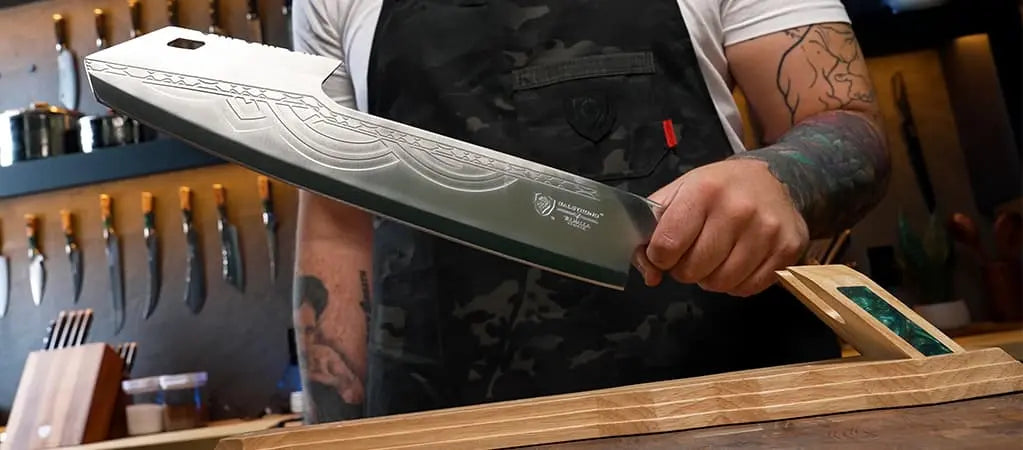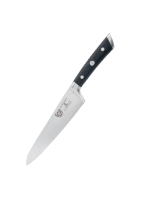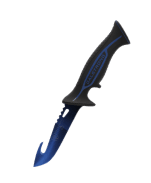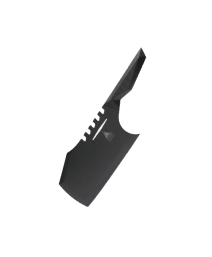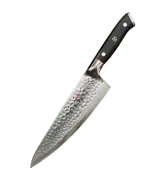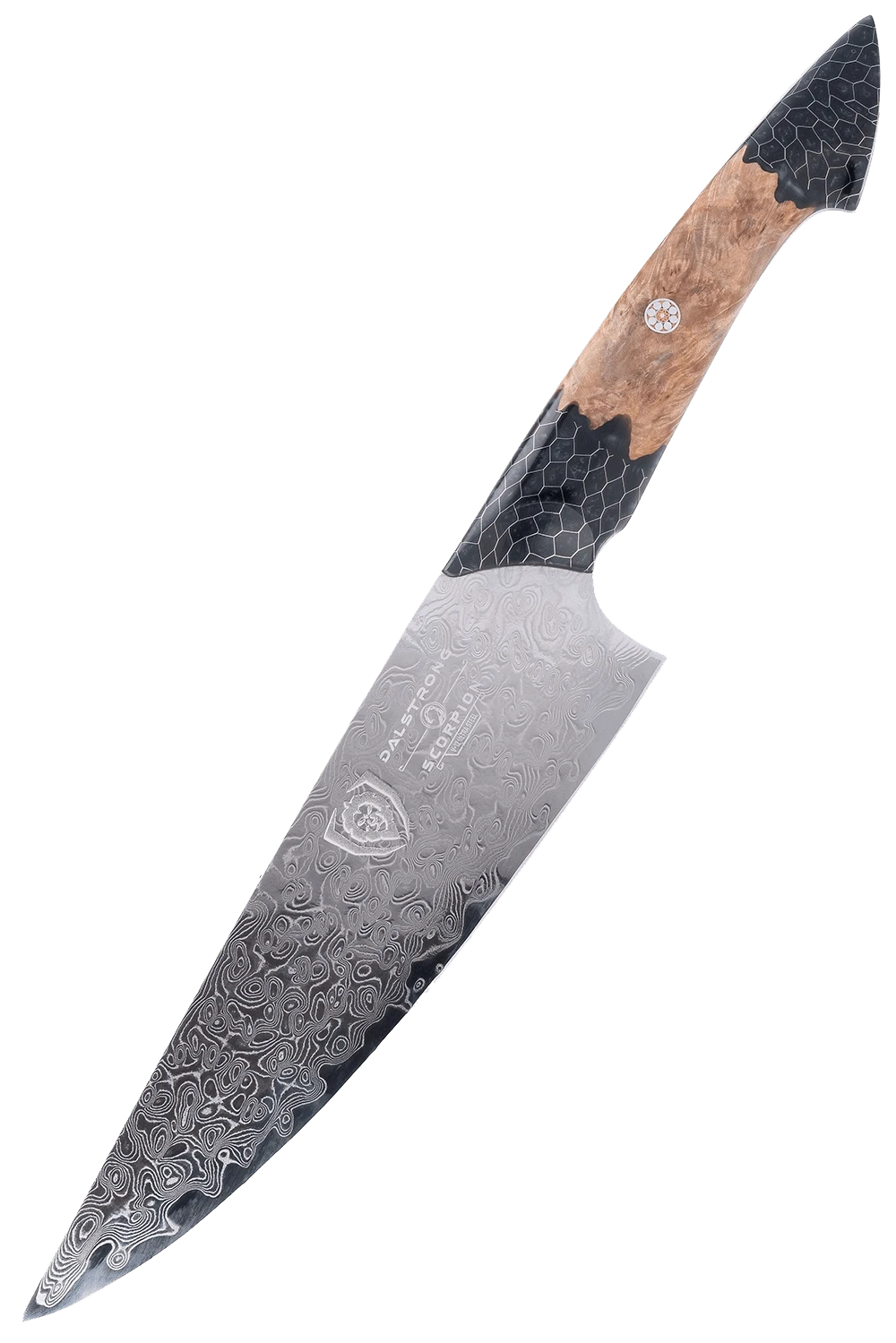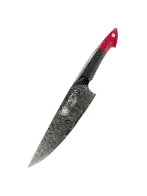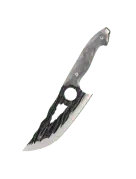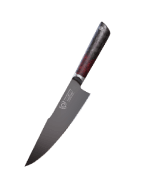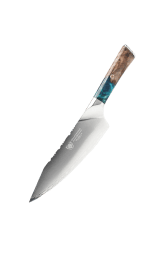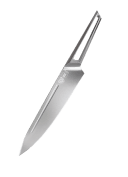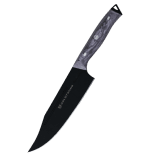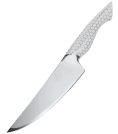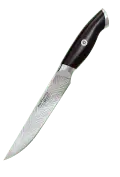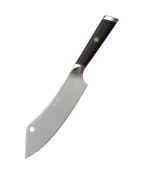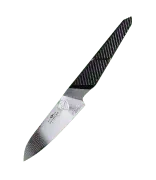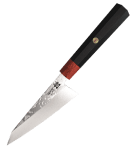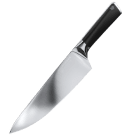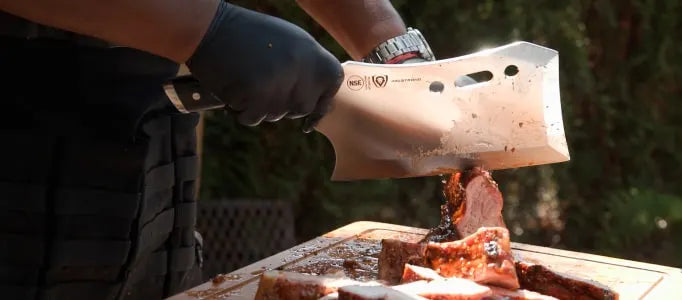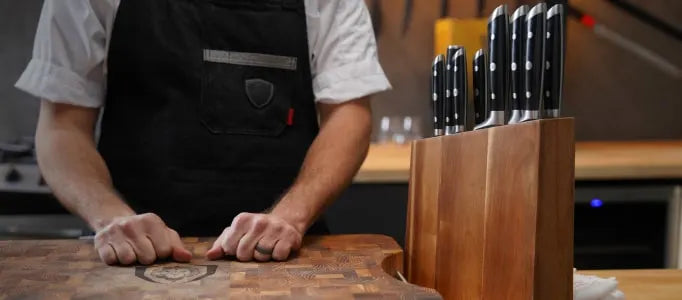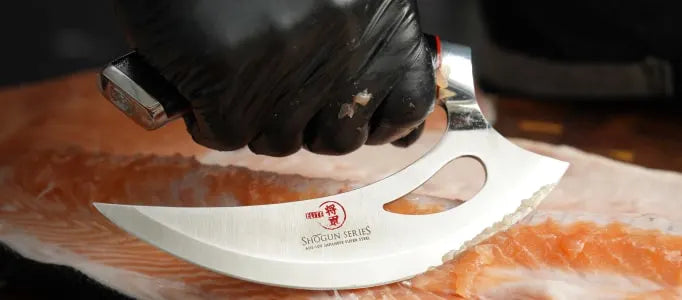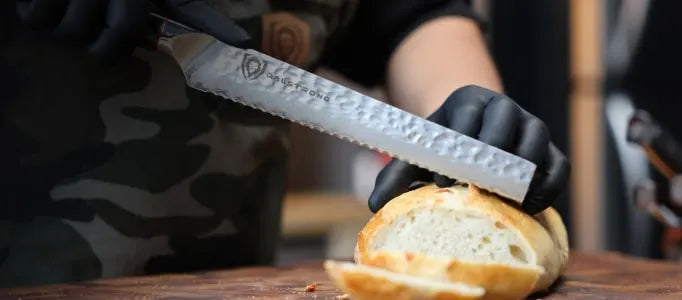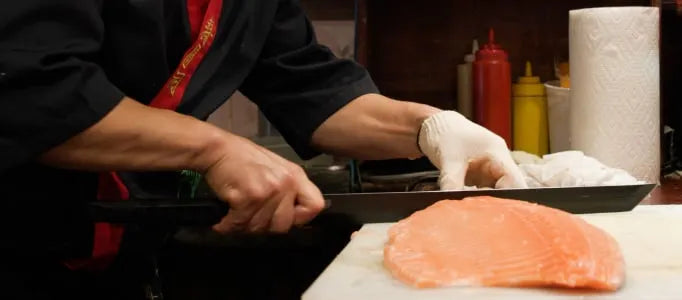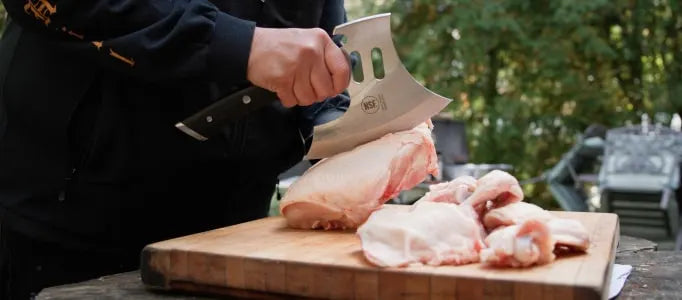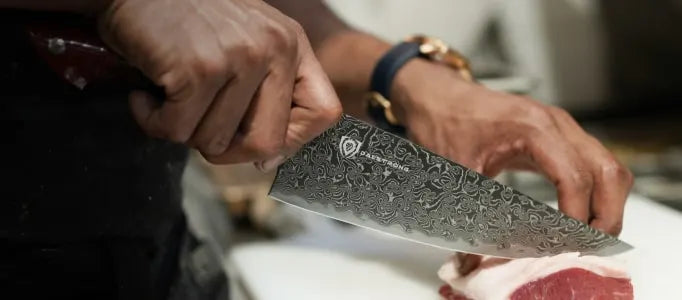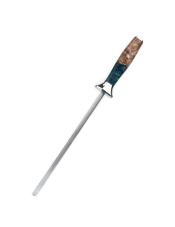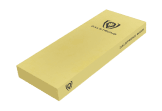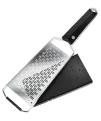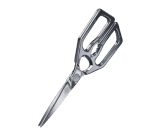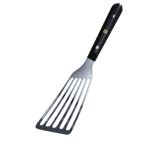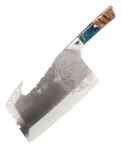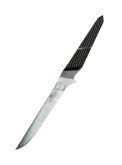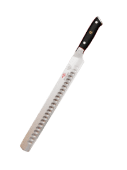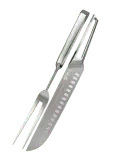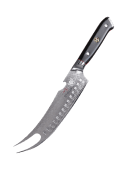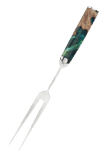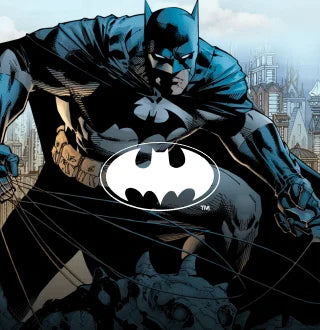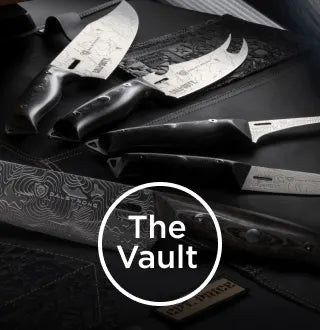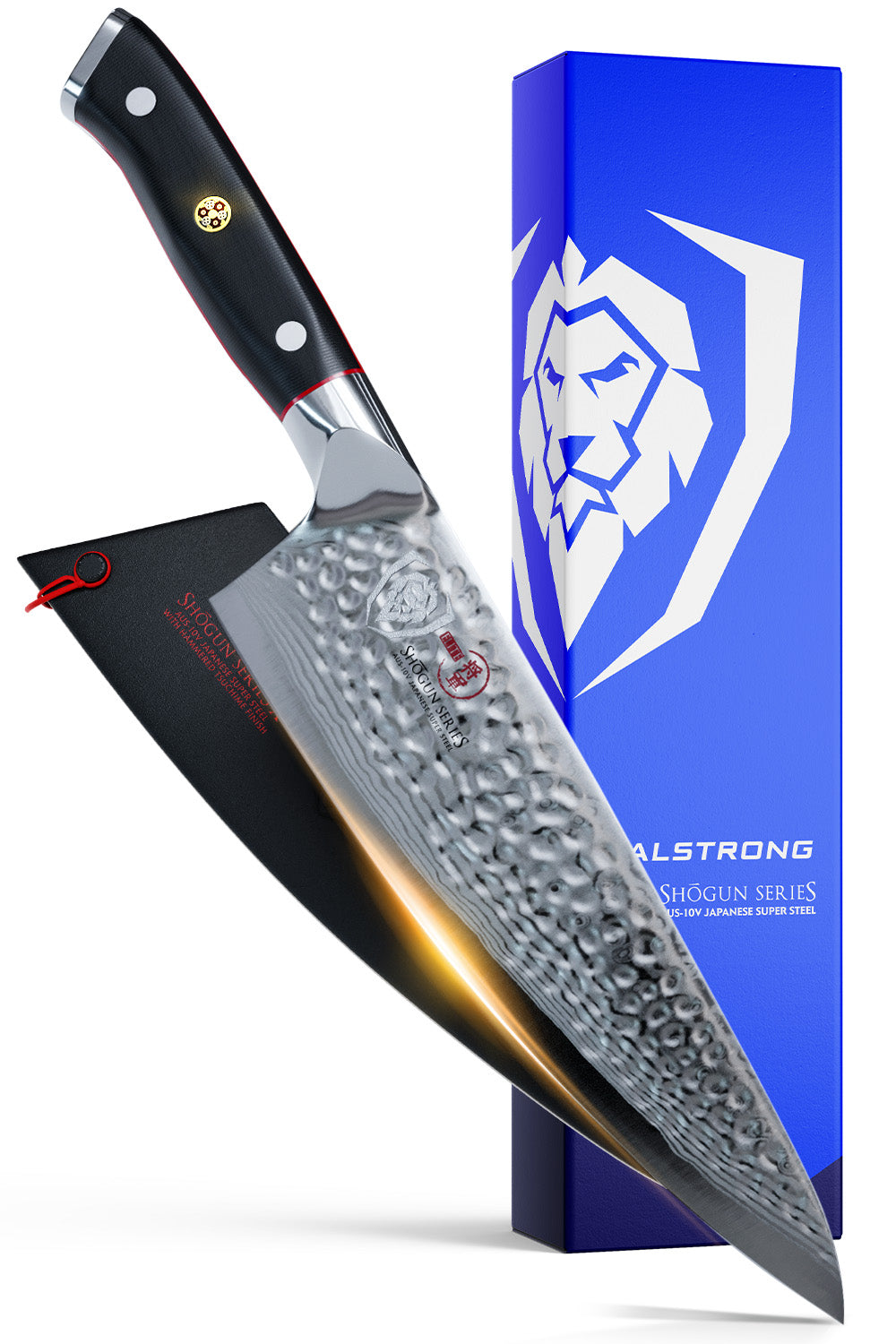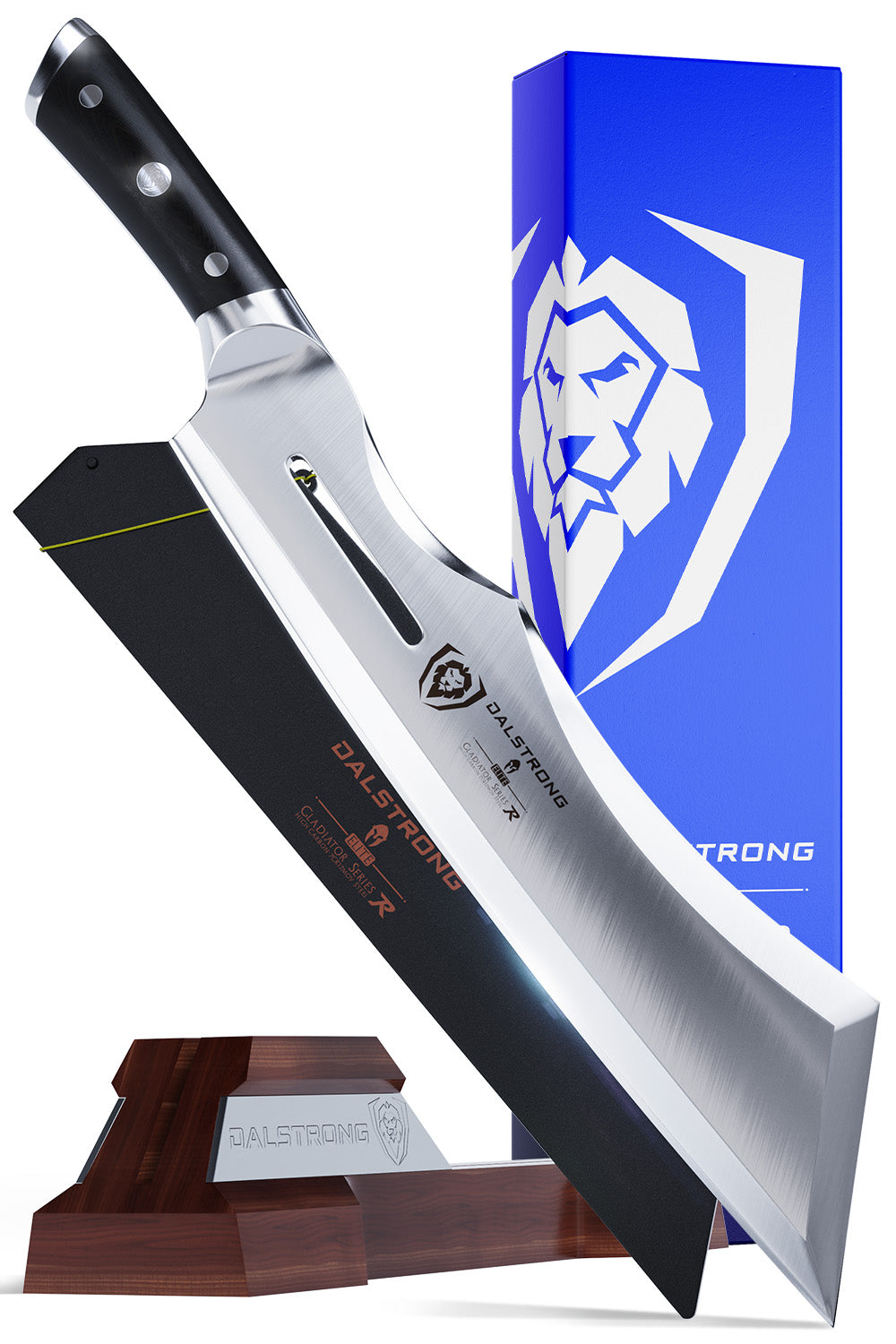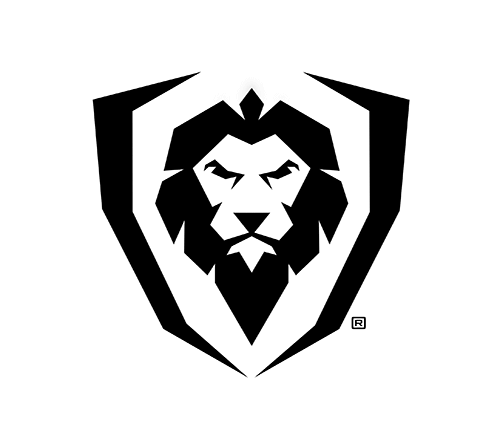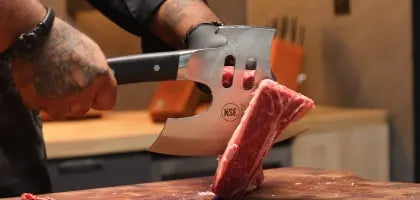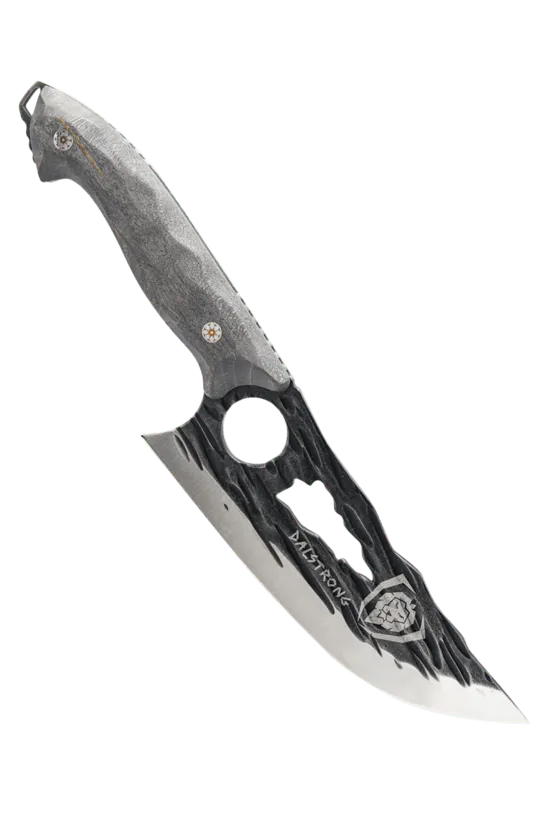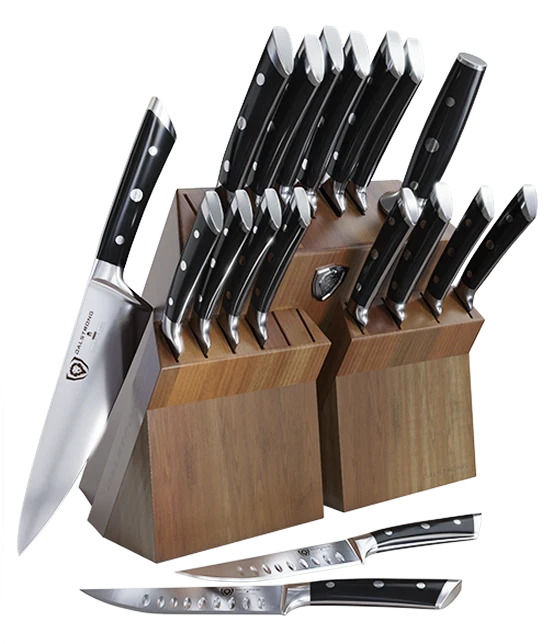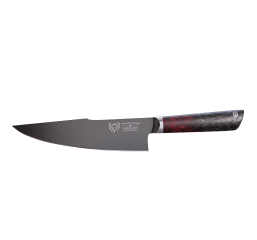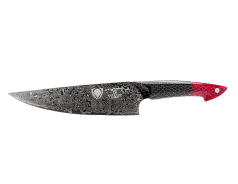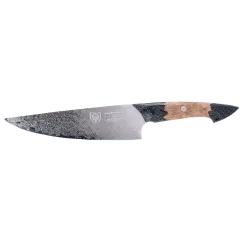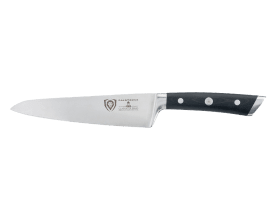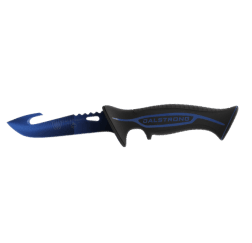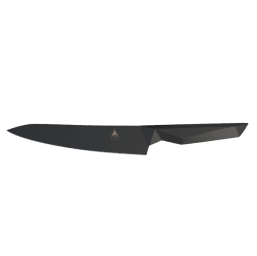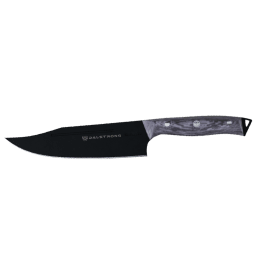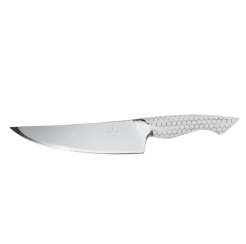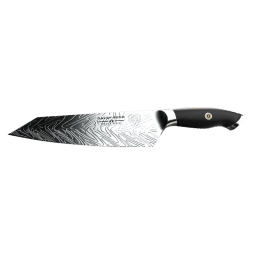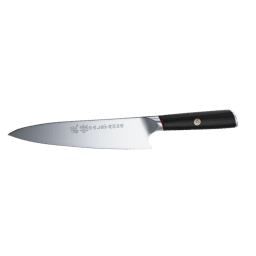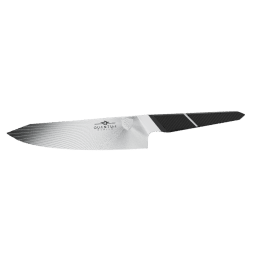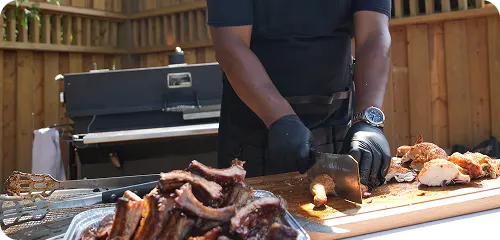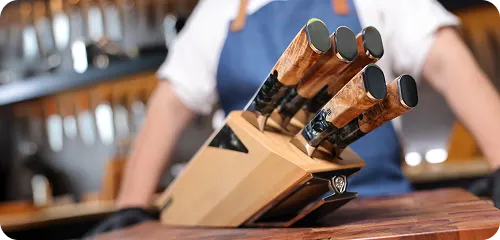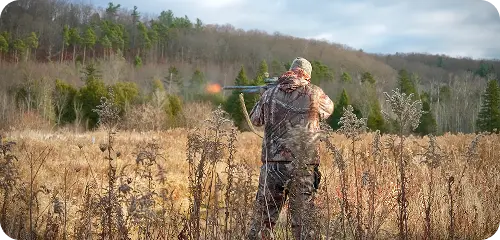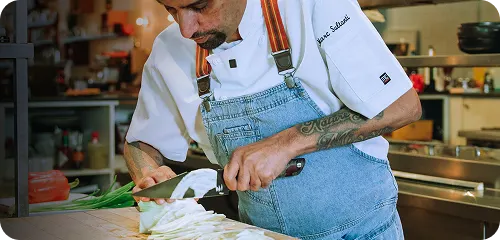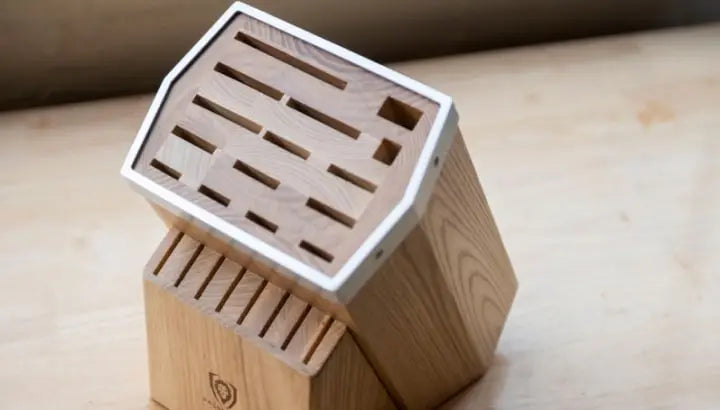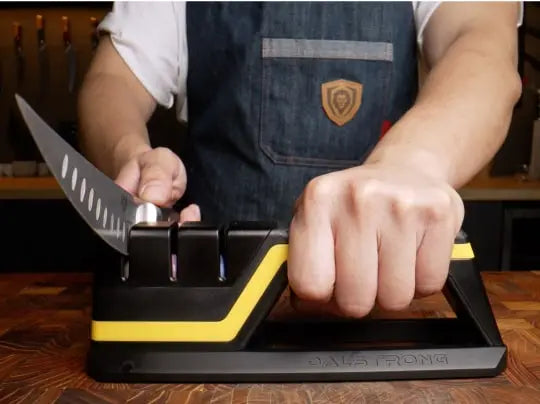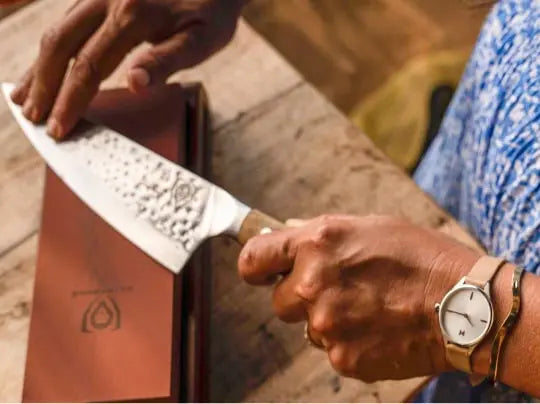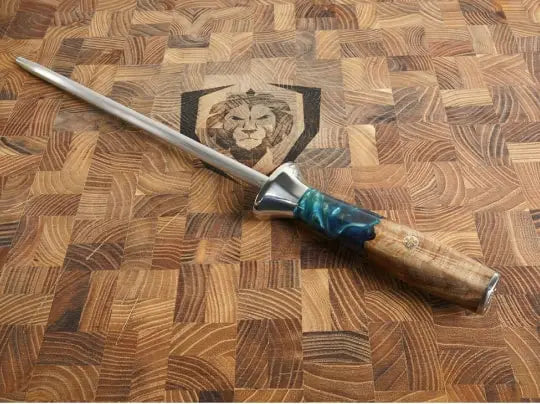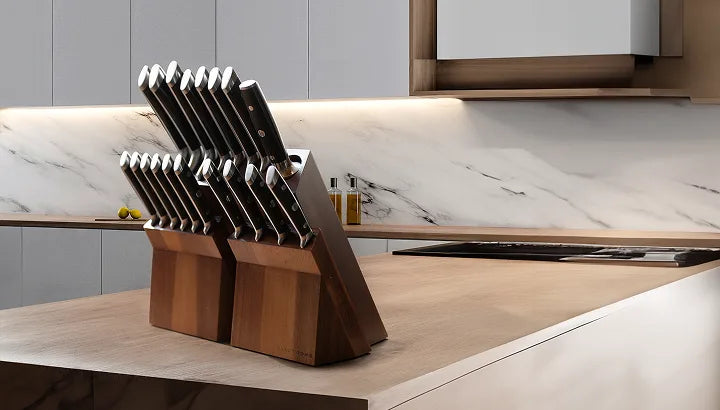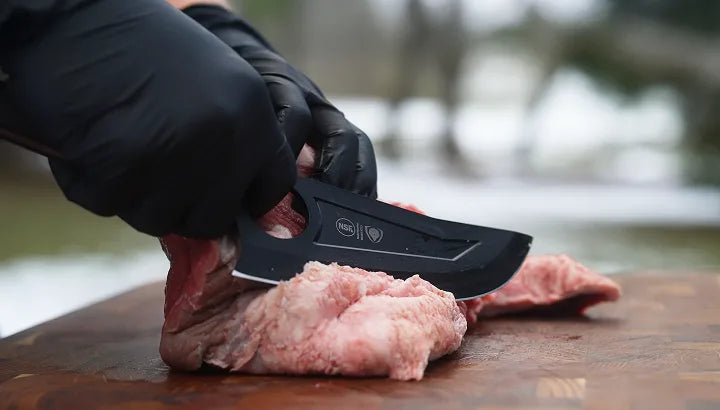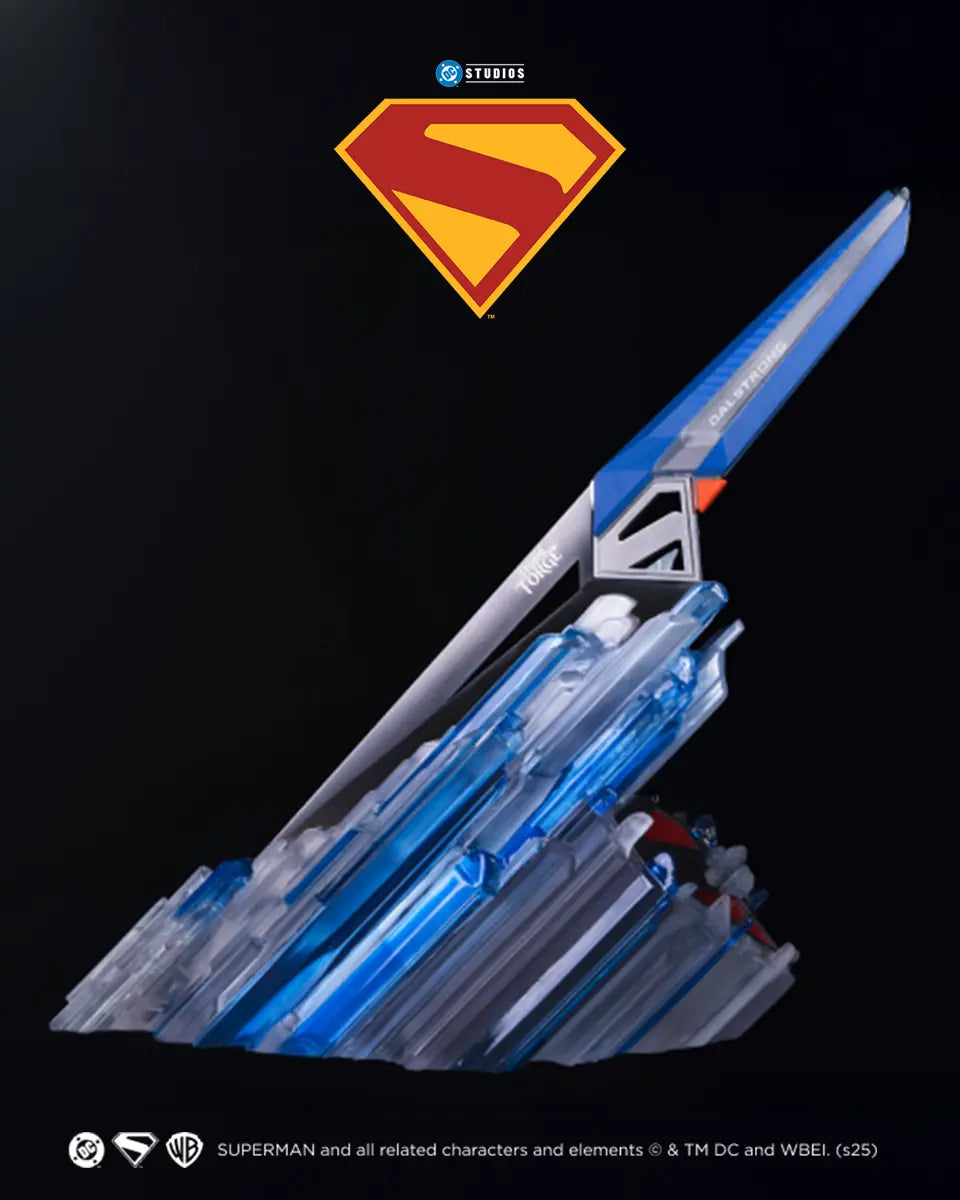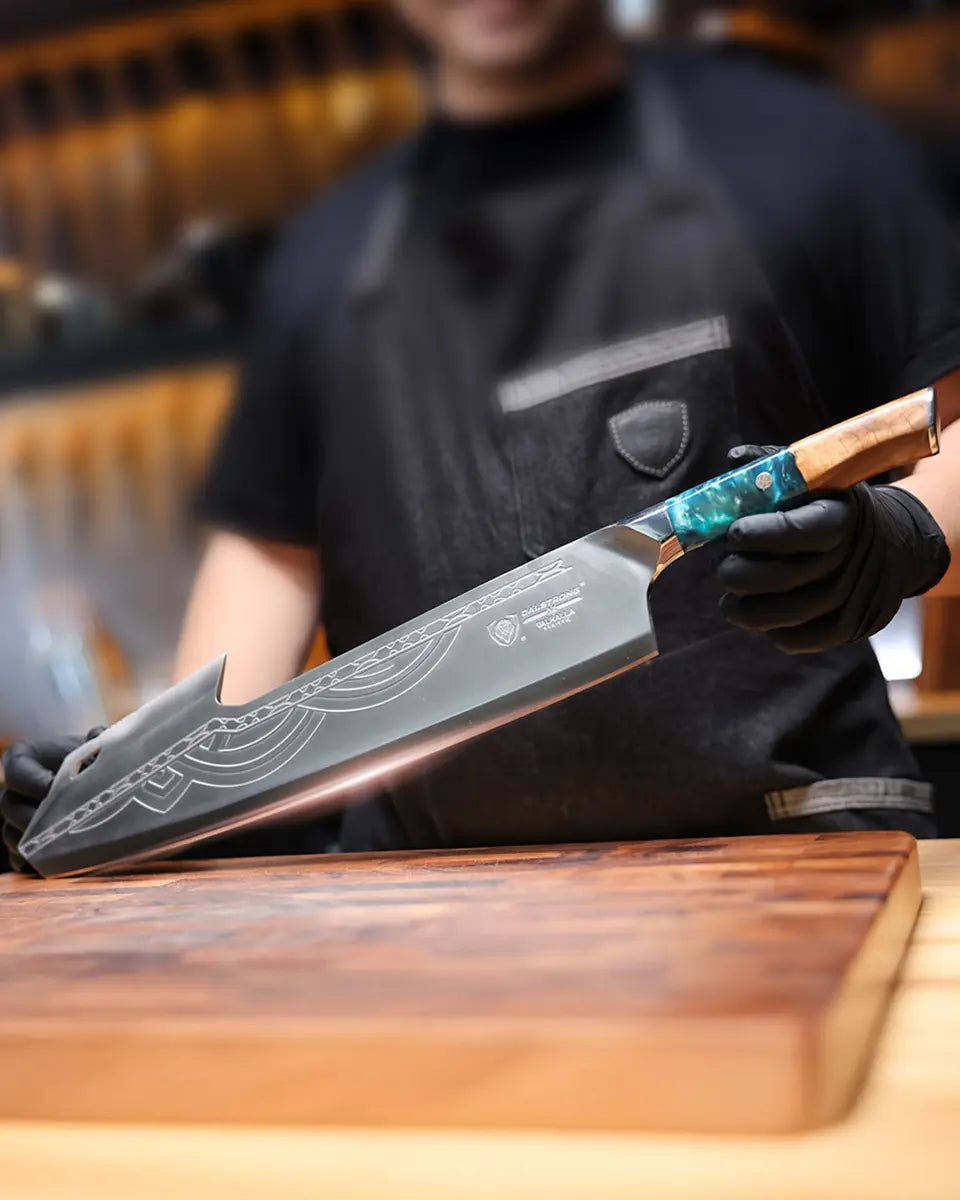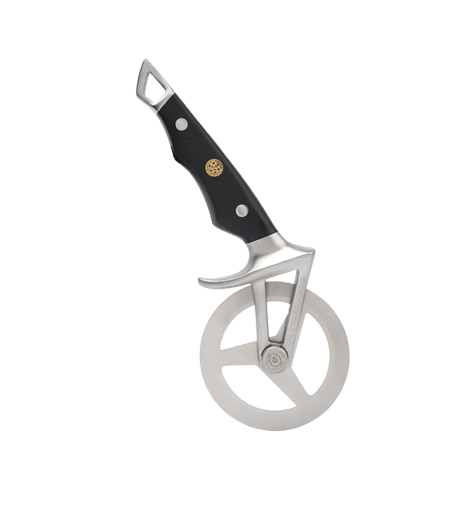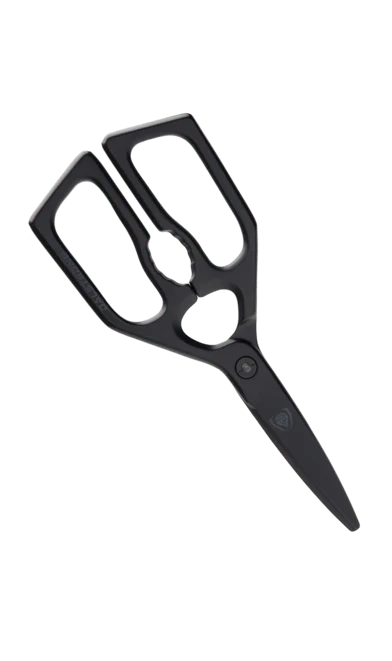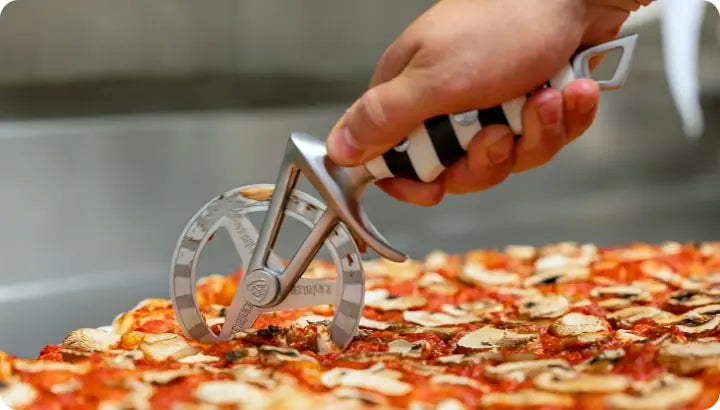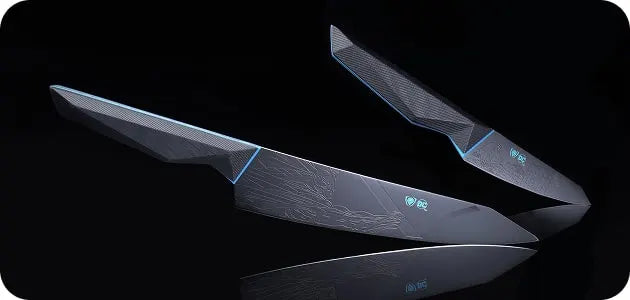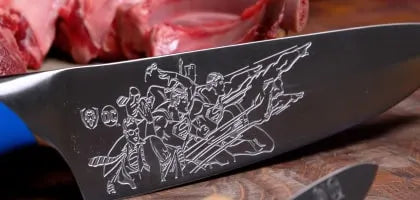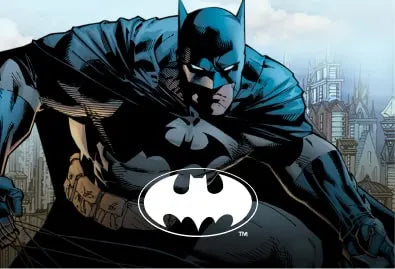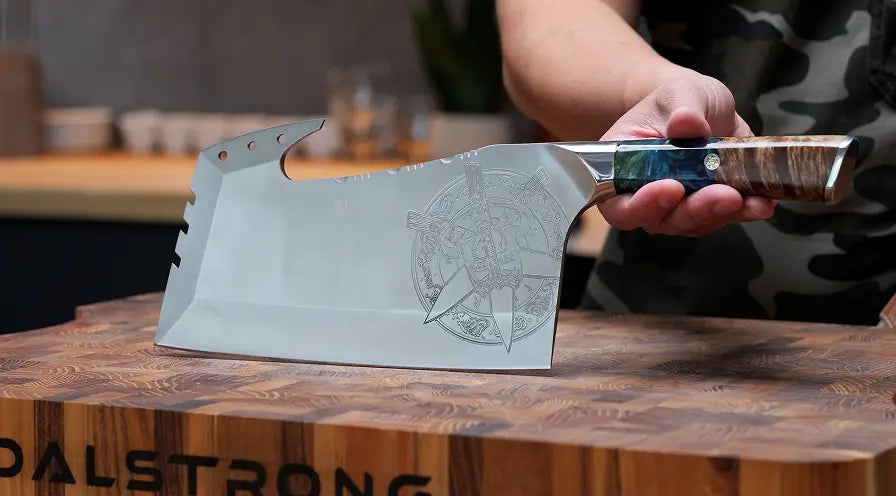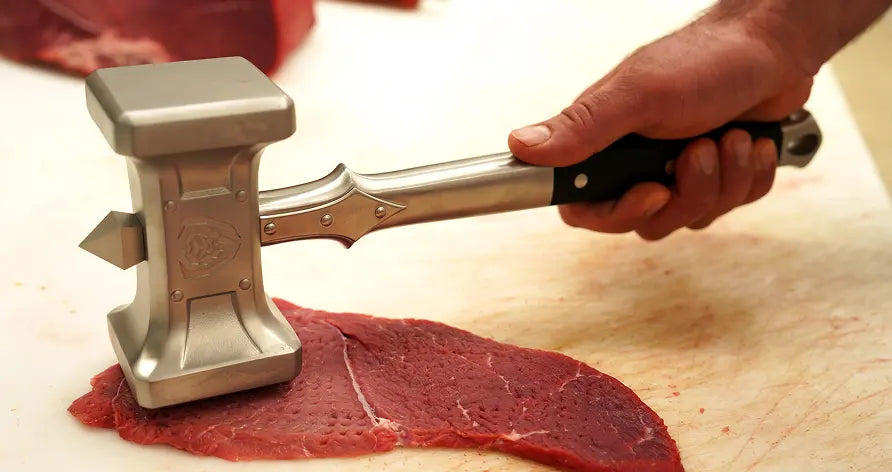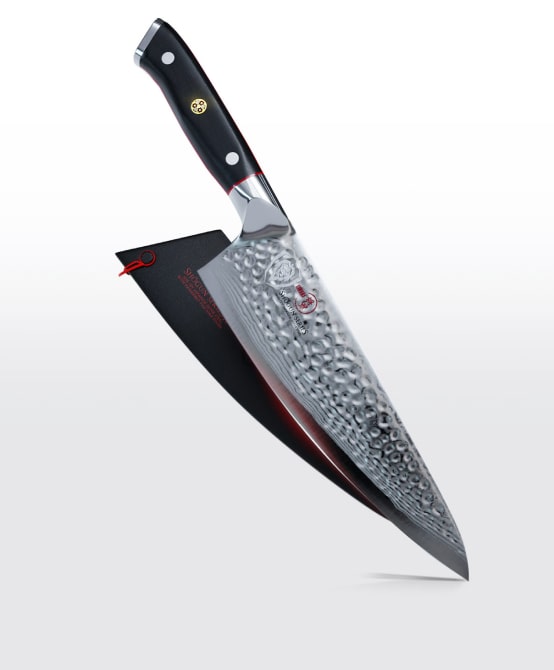 10'' Butcher's Breaking Knife | Gladiator Series | Dalstrong ©
10'' Butcher's Breaking Knife | Gladiator Series | Dalstrong ©
A scimitar knife is a long knife with a curved blade, also sometimes known as a butcher knife. They’re used by professional chefs, hunters, butchers, and grill masters to break down large pieces of meat.
1. What is a Scimitar Knife?
 12.5'' Butcher & Breaking Knife | Shogun Series | Dalstrong ©
12.5'' Butcher & Breaking Knife | Shogun Series | Dalstrong ©
It’s kind of a bummer how time will sometimes alter the name of things in a way that seems to strip them of any sort of character. Take scimitar knives, for instance – originally, a scimitar referred to any kind of long, single-edged sword with a curved blade, and thus it followed that a “scimitar knife” would be the same thing, just… in knife form.
But as time went on, the use of the term “scimitar” to refer to these long, curved knives decreased considerably, to the point where now they’re also commonly known as “butcher knives”; a more practical, yet thoroughly unexciting name.
So if you don’t quite know what we’re talking about: a scimitar knife is a long knife with a curved blade. Their length and their shape make it perfect for cutting meat, and if you’re a home cooking enthusiast or an amateur hunter you’ve probably thought about buying a knife just like it at some point.
The scimitar knife is designed to help easily break down large chunks of meat. Their curved blade allows for smooth slicing of large chunks of meat, as well as getting around bones and under skin. And because they’re knives that will be used for these tough jobs, the need to be made of heavy-duty steel.
So scimitar knives (also known as cimiter knives) are extremely sharp, durable, and resistant to chipping – or rather, they should be. Unfortunately, the market is flooded with supposed scimitar knives that are actually much flimsier than they need to be in order to get the job done. They skimp out on quality materials resulting in an inexpensive product that will last a fraction of the time it’s supposed to, and end up costing you more money in the long run.
So don’t be fooled. You need to pick a quality knife in addition to simply being a scimitar shape. In this guide, we’ll talk about what to look for in a scimitar knife and how to make sure you find the very best ones.
2. History of the Scimitar Knife
As mentioned earlier, the scimitar knife was derived from the scimitar sword, a type of sword that was used among Turkic and Tungusic soldiers in Central Asia. The original scimitar was called a “shamshir,” meaning “lion’s tail.” Thanks to their relative light weight (when compared to the larger swords), they became a popular tool to slash opponents while on horseback.
The curved blade was also considered useful for attacking opponents, since the arc of the curved blade matches the sweep of a rider’s arm when they slash a target while galloping. Nomadic horsemen took note of this and began using the sword for their battles. Scimitar swords began being used by Mongols, Raiputs, and Sikhs, among several other peoples.
The sword design picked up a lot of popularity throughout the Middle East from the Ottoman period until the age of firearms rendered swords obsolete, making them some of the most popular and broadly used sword shapes in history.
As the saying goes, time makes a kitchen knife out of every sword (okay, I don’t think that’s an actual saying, but it should be); and smaller, more compact versions of the scimitar started popping up as meat-handling tools for mountain men in the late 18th century. What is now known as the scimitar knife is a version of the butchers knife.
3. How to Use a Scimitar Knife
A thick, extremely sharp, extremely sturdy curved blade means that the scimitar knife can be used for a huge variety of tasks when dressing meat. Their most common uses are cutting down large chunks of meat into smaller, retail-sized cuts (like steaks), and getting large chunks of meat off bones.
If you’re camping, you can use a scimitar knife for other tasks, such as splintering your firewood and chopping through bone. However, those actions come with a lot of wear and tear, so it is recommended you don’t use your scimitar knife for that.
The scimitar knife can be used to skin sinew off meat and slice either really thin slices or large slabs of meat. Because of its pronounced curve, only the edge of the blade is touching the meat as you cut along; the point of the knife doesn’t puncture the meat at all.
4. How To Choose a Scimitar Knife
Now that you know the ins-and-outs of scimitar knives, a type of knife that may seem a bit intimidating to someone who doesn’t know that it’s essentially just a butcher knife, you should also know how to look for the best one. After all, if you go looking for a scimitar knife and happen to pick a low-quality one, you might become disillusioned with the knife itself when the problem was the product you picked.
Truthfully, however, picking out a great scimitar knife isn’t that much different from picking out a great chef knife, or a fillet knife, or really any other kind of kitchen knife. It comes down to the quality, size, and feel of the knife.
So what do you need to look for when shopping for the best scimitar knife?
How should a good scimitar knife feel?
When you hold any kind of high-end kitchen knife in your hand, you want it to feel like a natural extension of your arm. It should feel comfortable and easy, providing you with confidence instead of trepidation. This is especially true of the curved scimitar knife, where you need to be able to confidently guide it along your meat.
Materials
What is the scimitar knife made of? Look at the product description. Stainless steel knives are great, but there are other options available, like carbon steel knives. For heavy duty tasks that often accompany a Scimitar, you will want to avoid using a ceramic knife. Many scimitar knives, especially current ones, are made of Japanese steel (with stainless steel cladding), with a high Rockwell hardness score, allowing them to hold an edge for much longer. Durability is also a key concern.
Scimitar knives thrive on sharpness. They need to be able to hold an edge for a long amount of time, and their steel needs to be sturdy. Otherwise, its length will be beside the point, as you run the risk of chipping, bending, or even breaking your scimitar knife. They need to have quite a sharp edge in order to quickly and easily cut through to large pieces of meat.
Size
Most commonly, you’ll find scimitar knives ranging in size from 6” to 14”. That’s a pretty large range, and the specific knife you pick will depend entirely on the use you’re going to give it. Do you think you’ll mostly be using this to trim down pieces of meat? Or are you going to be handling wild game and breaking the carcass down to retail cuts?
The smaller scimitar knives are great for dressing smaller pieces of meat from poultry or pork chops, as well as getting around the bone with more precision. Meanwhile the larger ones excel at larger pieces such as venison, and their length comes in especially handy for skinning since you’ll be able to do one quick slice.
Weight
Scimitar knives need to have a bit of heft to them. Not only will you be applying them to large pieces of meat (therefore necessitating a bit of force sometimes) but cutting meat with a powerful-feeling kitchen tool will help you handle yourself more confidently in the kitchen, and make slicing meat a much more pleasurable experience.
For scimitar knives, the blade should be thicker and sturdier than most knives, which also allows for better sharpening of the edge. So if your scimitar knife feels too light, something’s off – look for another one for sure.
Balance
Balance is an incredibly important element for just about any kitchen knife you buy, but especially for long knives such as scimitar knives. Look for a knife that is full tang (where the blade runs through the handle); these are typically heavier and better balanced.
The handle
When you’re working with a knife on strenuous activities (such as breaking down a large animal carcass) you need to make sure it feels good to hold. The problem is that “feeling good” is a subjective thing and comes down to personal preference. Some people prefer wooden handles, steel handles, plastic handles, etc. Make sure it’s a non slip handle.
Appearance
You want a knife that looks good and exhibits toughness. This may seem like a superficial concern, but it’s no small thing; if you’re spending money on a premium product, you want it to look good too!
As a general rule, it’s best to use handles that are slip resistant, especially since butchering large pieces of meat can get slippery.
So where do you get a good scimitar knife? Instead of having to trawl through a bunch of stores, the Internet has made it easier than ever to find exactly the right type of knife you’re looking for. Sometimes you’ll be able to find a scimitar knife as part of a knife set (some of them come with a handy knife block) or you can simply purchase the knives individually.
5. Top Scimitar Knives To Buy
Now that we know what we should be on the lookout for, let’s take a look at the very best scimitar knives available for purchase. Below is a list of various scimitar knives that you can purchase online; all of them are high-quality products, but the specifics of what you need will determine exactly which one of them you end up choosing.
1. Butcher's Breaking Cimiter Knife 10" | Gladiator Series | NSF Certified | Dalstrong ©
This excellent piece of kitchen gadgetry is the perfect scimitar knife for home cooks of any experience level. As part of the Dalstrong Gladiator series, this powerful 10” scimitar knife is perfect for sectioning and portioning, allowing you to effortlessly glide through meats and break them down without damaging them at all. A fantastic piece of kitchen gadgetry.
PROS:
- Designed specifically to slice through flesh, break through cartilage, and trim fat from meats; features rock-hollow divots on the blade to minimize food drag and stuck.
- Precision forged from an ultra-sharp, single-piece high carbon German ThyssenKrupp steel with a Rockwell hardness score of 56+.
- The edge has the perfect balance between sharpness and resilience, hand-sharpened to 16-18 degrees per side.
- Features an ergonomic handle shape which makes this knife a pleasure to use.
Cons:
- If you’re in need of a large butchers knife, check out the next option below.
- There have been reports about this knife being a bit tricky to fully get into the included sheath.
2. Butcher & Breaking Cimiter Knife 12.5" | Shogun Series | Dalstrong ©
For home cooks or culinary professionals, this absolute powerhouse from Dalstrong’s acclaimed Shogun series is the way to go if you want a ruthlessly sharp knife that can easily glide through meats like butter without any tearing or shredding. Not only that, but this is one of the most gorgeous knives you’ll ever see, featuring Dalstrong’s Tsunami Rose blade pattern, hand-finished in the traditional Honbazuke 3-step method.
PROS:
- An extremely sharp knife, with a razor-like edge and an incredible 8-12 degree angle per side.
- Excellent strong blade edge retention at 62+ Rockwell, staying sharp for longer, even during extreme demands.
- 67-layer Damascus steel cladding with an AUS-10V Japanese super steel core.
- Beautiful design; this is the type of knife people will ask you questions about.
Cons:
- This knife is toward the upper end of the price range represented in this list, but you get what you pay for: a premium product featuring great performance and beautiful appearance.
- The handle is made of military grade G10 Garolite, while some folks might prefer a wooden handle.
3. Butcher & Breaking Knife 10" | Phantom Series | Dalstrong ©
The timeless beauty of the Phantom Series 10” scimitar knife will appeal to those who love the finer things in life. Not only does this knife look amazing, it also boasts incredible performance, designed to slice through flesh and meat effortlessly. It’s extremely comfortable, too, with an ergonomic handle made of pakkawood imported from Spain.
PROS:
- Precision forged Japanese AUS-8 steel with added chromium for stains and corrosion resistance.
- Features a beautiful hand-polished satin finish, with detailed engravings.
- Premium quality laminated pakkawood handle feels great to hold and looks absolutely beautiful.
- Extremely sharp blade, hand-finished within 13-15 degrees.
Cons:
- Some folks may prefer the feel of the G10 garolite handle featured in other selections on this list.
- This knife may be a little heavier than you expect from the looks, but you’ll get used to it very quickly.
4. Butcher & Breaking Knife 10" | Quantum 1 Series | Dalstrong ©

The 10” scimitar knife from Dalstrong’s Quantum 1 series is an absolute work of art. Engineered with “forward motion” in mind, everything about it screams effortless slicing. Cutting edge technology with an extremely sharp blade, hand sharpened to 8-12 degrees and designed to feel extremely comfortable in your palm.
PROS:
- Precision-forged, ultra-sharp, high-carbon American BD1N-VX steel at an incredible 63+ HRC with an added vacuum heat seal treatment.
- An absolutely amazing looking knife, featuring the Nova Prime blade pattern that not only reduces drag but looks incredible.
- Handle made out of fiber-resin military grade G10 and carbon fiber hybrid.
- Designed for maximum maneuverability and comfort.
Cons:
- This knife looks amazing, but it’s also very “flashy”. It you prefer your kitchen tools to match with the rest of your decor, check out some of the other options on this list.
- At 10”, this is great for most kitchen uses, but if you’re looking to use your knife on larger cuts of meat maybe check out some of the larger options here. Such as…
5. Butcher & Breaking Cimiter Knife 14" | Gladiator Series | NSF Certified | Dalstrong ©
This is the scimitar knife for the serious home cook or commercial kitchen. 14” blade designed to handle nose-to-tail sectioning of just about any piece of meat you can throw its way. An absolute kitchen powerhouse, and the ultimate scimitar knife for the hunting enthusiast in your family.
PROS:
- Made of ultra-sharp, wear-resistant high carbon German ThyssenKrupp Steel.
- Tall breaking knife blade height for knuckle clearance, aiding in food preparation and safety.
- Features a comfortable, stylish premium ABS polymer handle.
- Incredible value for the price.
Cons:
- At 14”, this is a pretty large knife. Its ample girth is great for many uses but might be too big for some home cooks. Ask yourself if you really need this much knife.
- Its premium ABS polymer handle is comfortable and stylish, but some folks might prefer the feel of G10 or Spanish pakkawood featured on some of the other knives in this list.
6. Frequently Asked Questions About Scimitar Knives
What is a scimitar knife used for?
A scimitar knife is a type of butcher knife that is used for breaking down large pieces of meat into smaller pieces and retail-ready cuts. You can also use them for skinning, deboning, and any other task that a typical butcher knife might be used for.
Which type of knife is also known as scimitar?
The scimitar knife has a few different names; sometimes the word is used interchangeably with “butcher knife,” and sometimes it’s simply spelled differently (“cimiter” instead of “scimitar”). It is also sometimes known as a breaking knife.
What is a 8 inch carving knife used for?
An 8 inch carving knife can be used to slice meats extremely thinly without damaging the meat at all, as well as any other carving or slicing need you might have in the kitchen.
Check Out Dalstrong Butcher Knives Today
Written by Jorge FarahBorn on the coast of Colombia and based in Buenos Aires, Jorge is a cooking enthusiast and kitchenware obsessive with a tremendous amount of opinions.



